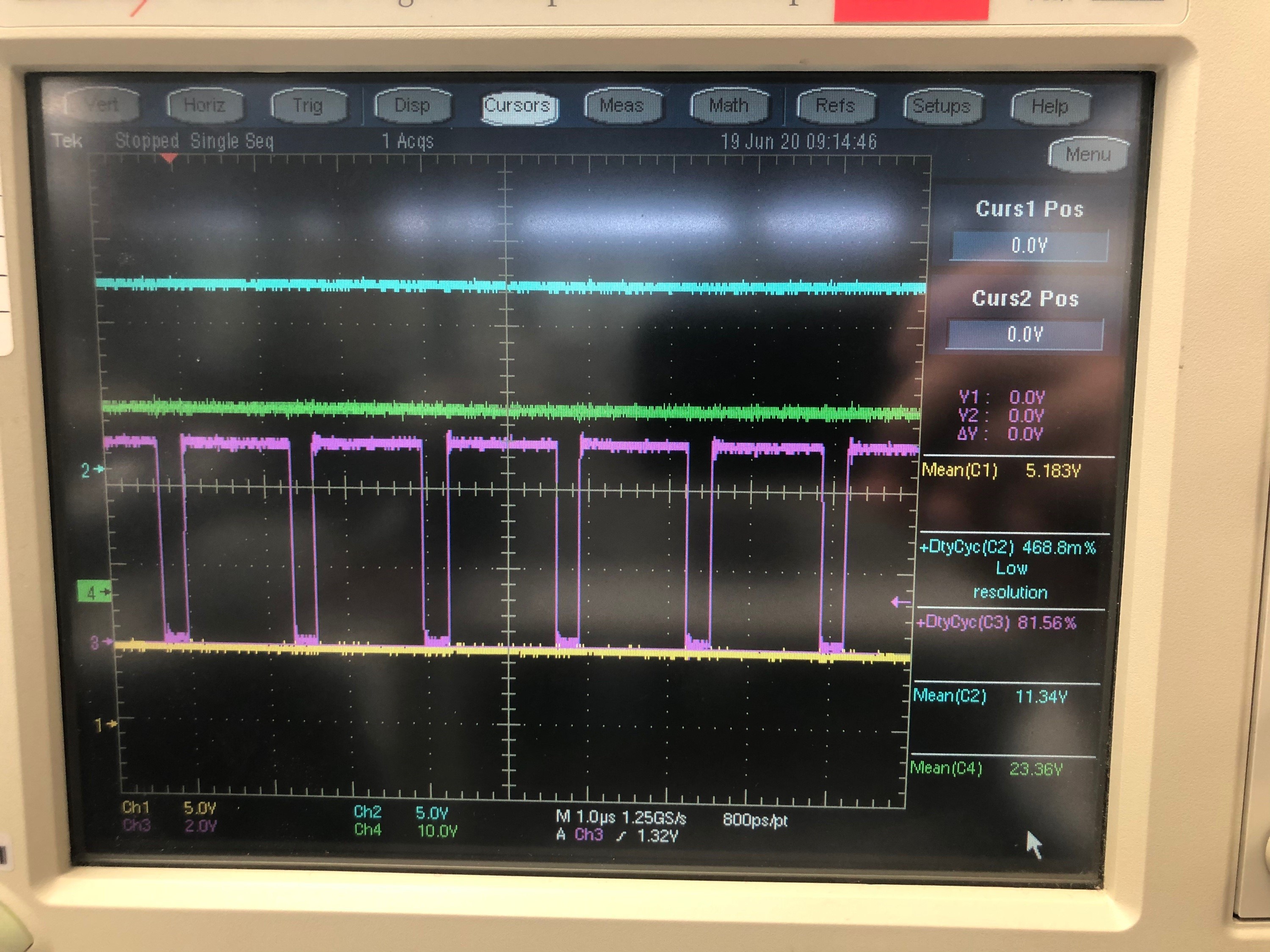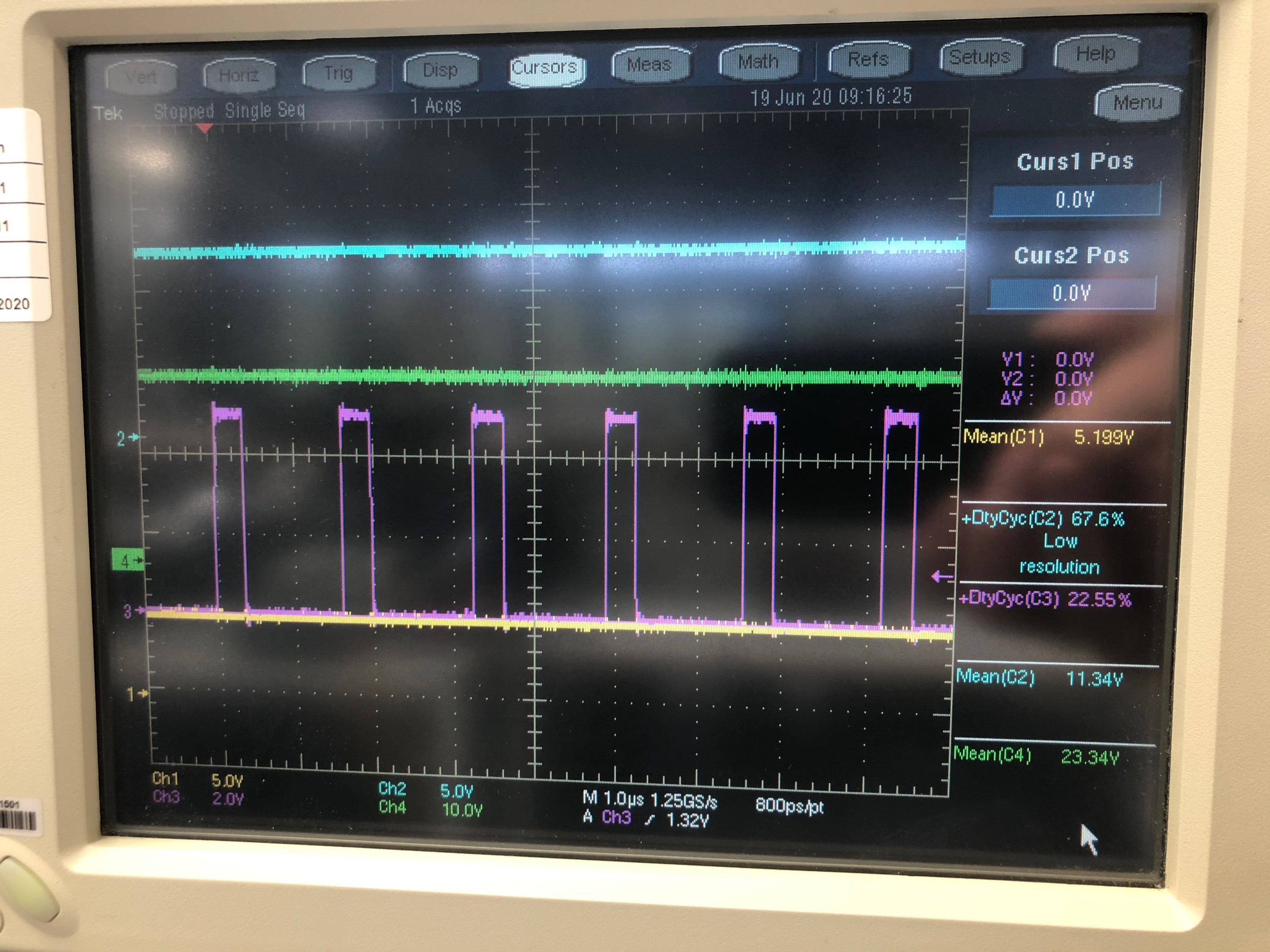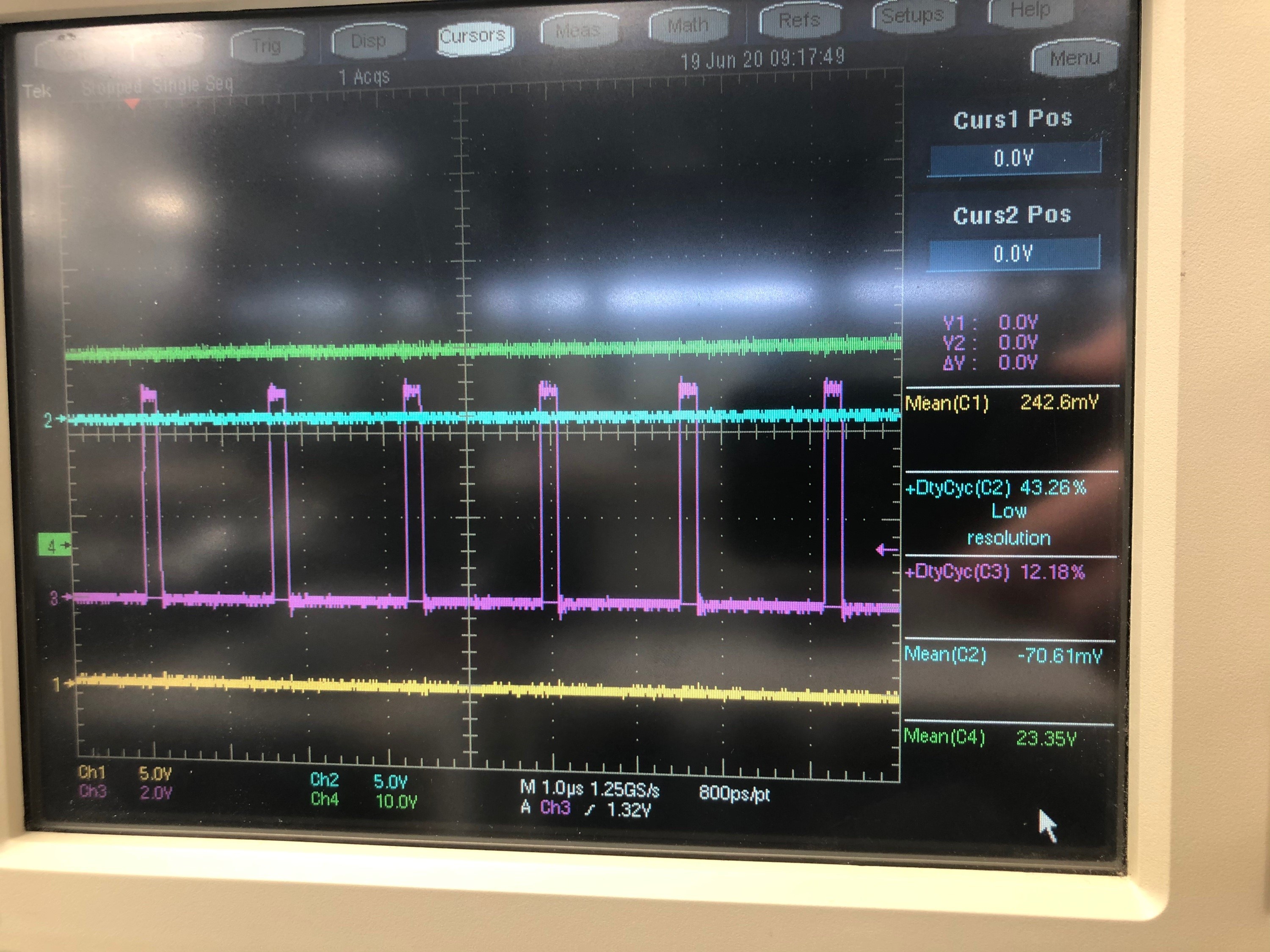Hello TI
I am making this post as I was suggested to do so by TI customer support.
I am using the TPS92638-Q1 in a design, the schematic is identical to the one in Figure 38 in the data sheet, the only differences are TEMP connected directly to GND and each channel connected to a single LED.
The supply voltage is 24V, the input PWM waveform is a 0 to 5V square wave.
The application requires the LEDs to be dimable from the maximum current, as defined by the resistor at the Ref pin, down to completely off by using an input PWM with 0-100% duty cycle.
However, in the lab, I observe that a decrease in the input duty cycle down to a few percent, shuts off the output and the FAULT pin goes low. A power cycle is required to toogle the FAULT pin and enable the output again. I suspect that the IC interprets the low output as a short due to the low output voltage. Is my understanding correct?
Looking through the data sheet I see, in section 7.5 under “CURRENT REGULATION (IOUTx)” that the minimum current is 2 mA.
In section 9.3.2 of the data sheet, it is stated that grounding the PWM input shuts of the corresponding output channels.
My thought was that an input duty cycle of 0% would be the same as grounding the PWM input (same potential), and hence the outputs should turn off, but this does not seem to be the case?
Please advise.
Lars






